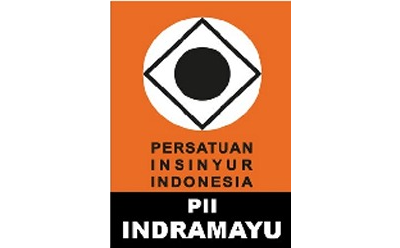STUDI KINERJA HANDHELD PORTABLE 3D SCANNER DALAM PENGUKURAN DIAMETER DAN KEDALAMAN LUBANG PADA SPESIMEN LOGAM
Abstract
A Handheld portable 3D Scanner is an optical-based tool that can be gripped by hand and moved from one place to another. This tool is used to scan part’s surface and produce a 3-dimensional representation in the form of a point cloud. The use of 3D Scanners has grown significantly in recent years, especially in applications in the metrology, industrial manufacturing inspection, and reverse engineering. Apart from the ease of use and flexibility of use, as an optical-based tool with triangulation principles, Handheld Portable 3D Scanners have limitations in scanning the geometric shape of a narrow hole or slit. The specifications published by the manufacturer do not fully describe tool’s performance in this regard. For this reason, an evaluation of the performance of the Handheld Portable 3D Scanner is carried out by determining the error of measuring holes on the workpiece with variations in depth and diameter. As a reference value, the results of the Coordinate Measuring Machine –CMM measurement are used. . The study result show that handheld 3D scanners generally have an error in measuring the diameter and measuring the depth of the hole, above the specification of 0.03 mm. In holes with a diameter of 1 mm, the handheld 3D scanner has a relationship between the error of measuring hole’s diameter and hole’s diameter with the regression equation: y=0.037x-0.54. En values categorized as "outliers" were found in holes with a diameter of 1 mm with a depth of 0.5, 1, 2, 4 mm and holes with a diameter of 2mm with a depth of 4 mm.
Full Text:
PDFReferences
Beraldin, J. A., MacKinnon, D., & Cournoyer, L. (2015). Metrological characterization of 3D imaging systems: Progress report on standards developments. 17th International Congress of Metrology, CIM 2015, 3, 1–21. https://doi.org/10.1051/metrology/20150013003
Cheng, Y., Wang, Z., Chen, X., Li, Y., Li, H., Li, H., & Wang, H. (2018). Evaluation and optimization of task-oriented measurement uncertainty for coordinate measuring machines based on geometrical product specifications. Applied Sciences (Switzerland), 9(1). https://doi.org/10.3390/app9010006
Emam, S. M., Khatibi, S., & Khalili, K. (2014). Improving the Accuracy of Laser Scanning for 3D Model Reconstruction Using Dithering Technique. Procedia Technology, 12, 353–358. https://doi.org/10.1016/j.protcy.2013.12.498
França, J. G. D. M., Gazziro, M. A., Ide, A. N., & Saito, J. H. (2005). A 3D scanning system based on laser triangulation and variable field of view. Proceedings - International Conference on Image Processing, ICIP, 1, 425–428. https://doi.org/10.1109/ICIP.2005.1529778
Genta, G., Minetola, P., & Barbato, G. (2016). Calibration procedure for a laser triangulation scanner with uncertainty evaluation. Optics and Lasers in Engineering, 86, 11–19. https://doi.org/10.1016/j.optlaseng.2016.05.005
Givi, M., Cournoyer, L., Reain, G., & Eves, B. J. (2019). Performance evaluation of a portable 3D imaging system. Precision Engineering, 59(December 2018), 156–165. https://doi.org/10.1016/j.precisioneng.2019.06.002
Guidi, G. (2013). Metrological characterization of 3D imaging devices. Videometrics, Range Imaging, and Applications XII; and Automated Visual Inspection, 8791(December), 87910M. https://doi.org/10.1117/12.2021037
Mendricky, R. (2015). Analysis of measurement accuracy of contactless 3D optical scanners. MM Science Journal, 2015(OCTOBER), 711–716. https://doi.org/10.17973/MMSJ.2015_10_201541
Mendricky, R. (2016). Determination of measurement accuracy of optical 3D scanners. MM Science Journal, 2016(DECEMBER), 1565–1572. https://doi.org/10.17973/MMSJ.2016_12_2016183
Phillips, S., Krystek, M., Shakarji, C., & Summerhays, K. (2009). Dimensional measurement traceability of 3D imaging data. Three-Dimensional Imaging Metrology, 7239, 72390E. https://doi.org/10.1117/12.816498
Polo, M. E., & Felicísimo, A. M. (2012). Analysis of uncertainty and repeatability of a low-cost 3D laser scanner. Sensors (Switzerland), 12(7), 9046–9054. https://doi.org/10.3390/s120709046
Takatsuji, T., Osawa, S., & Sato, O. (2008). Standardization of noncontact 3D measurement. Two- and Three-Dimensional Methods for Inspection and Metrology VI, 7066, 706602. https://doi.org/10.1117/12.797968
Vagovský, J., Buranský, I., & Görög, A. (2015). Evaluation of measuring capability of the optical 3D scanner. Procedia Engineering, 100(January), 1198–1206. https://doi.org/10.1016/j.proeng.2015.01.484
Woźniak, A., & Dobosz, M. (2003). Metrological feasibilities of CMM touch trigger probes. Part I: 3D theoretical model of probe pretravel. Measurement: Journal of the International Measurement Confederation, 34(4), 273–286. https://doi.org/10.1016/j.measurement.2003.05.001
DOI: https://doi.org/10.31884/jtt.v9i1.420
Refbacks
- There are currently no refbacks.
Copyright (c) 2023 JTT (Jurnal Teknologi Terapan)

This work is licensed under a Creative Commons Attribution-NonCommercial-NoDerivatives 4.0 International License.
 Creative Common Attribution-ShareAlike 4.0 International (CC BY-SA 4.0)
Creative Common Attribution-ShareAlike 4.0 International (CC BY-SA 4.0)













